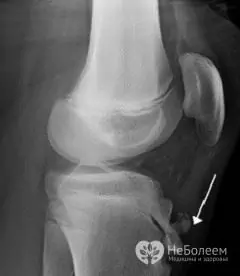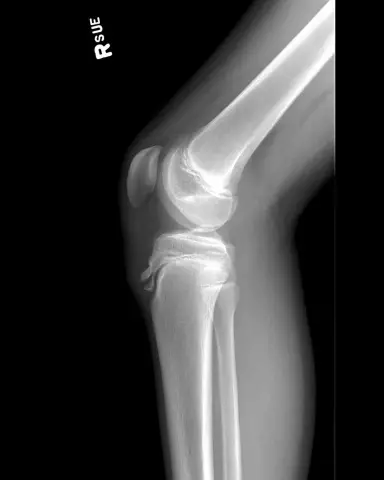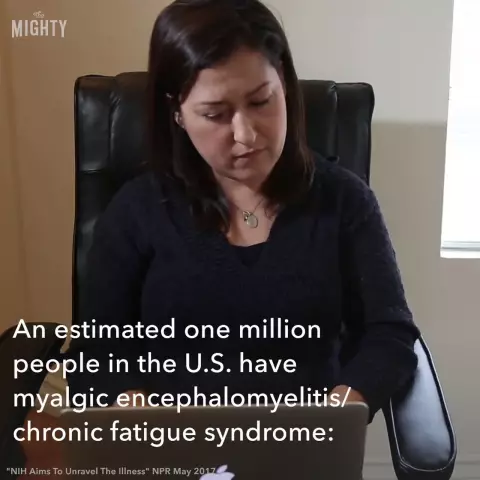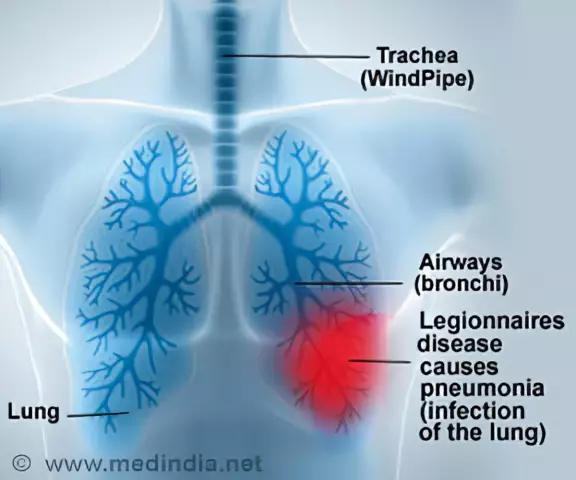- Author Rachel Wainwright [email protected].
- Public 2023-12-15 07:39.
- Last modified 2025-11-02 20:14.
Osgood Schlatter's disease

Osgood Schlatter's disease is a pathological change in the tibia with the appearance of tuberosity, caused by the inflammatory process of the bone and cartilage structure.
Causes and symptoms of the disease
Basically, Osgood Schlatter's disease develops in boys during adolescence. The main cause of Osgood Schlatter's disease is considered to be damage to the knee tendons, as well as intense stress on the upper part of the tibia.
The disease begins with pain and swelling, and then other symptoms of Osgood Schlatter disease develop, such as pain when walking, bumps, and collapse of the tibia.
Prevention of the disease is the limitation of physical activity during the growth and development of the bone structure, especially in adolescent boys (10-16 years old).
The most common causes of Osgood Schlatter's disease are sports such as volleyball, football, basketball, martial arts, boxing, acrobatics, tennis, figure skating, skiing, etc.
As a result of high physical exertion, pathological processes begin in bone tissues that can provoke injuries, fractures, bruises and tendonitis. In the process of inflammatory changes, irregular bone fusion, impaired coordination, and growths on the tibia are formed.
If the disease is at the initial stage of development, then it is enough to stop physical activity in order to start the process of bone restoration.
With the serious development of Osgood Schlatter's disease, special therapeutic and restorative therapy is required.
Diagnosis of Osgood Schlatter's disease
Diagnosis of Osgood Schlatter's disease is carried out using x-rays of the joints and bones of the skeleton, ultrasound of the knee joint and radioisotope scanning.

The X-ray image shows pathological tubercles and proboscis on the bone, and it can also be used to determine the degree of destruction of the tibia and the stage of the inflammatory process.
Treatment for Osgood Schlatter's disease
Treatment of Osgood Schlatter's disease is carried out with anti-inflammatory, decongestant and pain relieving drugs. The limb should be at rest for a long time; compresses with ice can be applied to it.
The swelling and pain syndrome disappear over time, and for proper bone healing, it is necessary to put a plaster splint on the leg, and later to undergo a course of therapeutic baths and quartz procedures.
In some cases, after Osgood Schlatter's disease, lumpy growths on the bone and pathological changes in the knee joint remain, then a course of physiotherapeutic procedures is necessary. If necessary, the surgeon prescribes an operation to remove pathological formations and part of the bone, followed by the introduction of a bone graft.
During the period of treatment and recovery, the patient needs complete rest and the introduction of hydrocortisone, and in the presence of complications of the disease, bone grafting or making a special hole in it can be performed to accelerate the regeneration processes.
After complete recovery, the patient is instructed to limit or cancel physical education for several years.
Among the main methods of treatment for Osgood Schlatter's disease are:
- physiotherapy procedures, including electrophoresis with calcium, lidocaine and procaine, paraffin therapy, mud therapy;
- intensive shock wave therapy;
- surgical intervention in severe stages (fragmentation, fixation, transplantation).
YouTube video related to the article:
The information is generalized and provided for informational purposes only. At the first sign of illness, see your doctor. Self-medication is hazardous to health!






